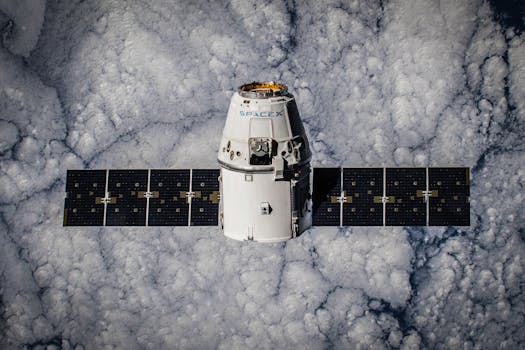
The future of satellite technology: trends and innovations is an exciting and rapidly evolving field. The future of satellite technology is rapidly evolving with new trends and innovations. Satellite technology has come a long way since its inception, and it continues to play a vital role in modern communication, navigation, and weather forecasting. As we look to the future, it’s essential to examine the current trends and innovations that are shaping the industry.
One of the most significant trends in satellite technology is the development of small satellites or smallsats. These compact satellites are designed to be more affordable and efficient than traditional large satellites. Smallsats are typically launched into low Earth orbit and are used for a variety of applications, including Earth observation, communication, and scientific research. Companies like Planet Labs and Spire Global are leading the charge in small satellite development, with constellations of hundreds of smallsats providing unprecedented coverage and data collection capabilities.
Advancements in Satellite Technology
Another significant trend in satellite technology is the advancement of satellite propulsion systems. Traditional satellite propulsion systems rely on chemical fuels, which can be heavy and inefficient. New propulsion systems, such as ion engines and hall effect thrusters, offer greater efficiency and longer lifespan. These new propulsion systems enable satellites to operate for longer periods, reducing the need for replacement and increasing the overall efficiency of satellite constellations.
Increased Focus on Sustainability
In recent years, there has been an increased focus on sustainability in satellite technology. As the number of satellites in orbit grows, so does the risk of space debris. To mitigate this risk, companies are developing new technologies and strategies for sustainable satellite operations. This includes designing satellites with de-orbiting capabilities, which allow them to safely re-enter the Earth’s atmosphere at the end of their lifespan. Additionally, companies are exploring the use of in-orbit servicing, which enables satellites to be refueled, repaired, or upgraded while in orbit.
Conclusion
In conclusion, the future of satellite technology is bright, with new trends and innovations emerging all the time. From small satellites to advanced propulsion systems, and from increased focus on sustainability to the development of new applications, the industry is rapidly evolving. As we look to the future, it’s essential to stay informed about the latest developments and advancements in satellite technology. Whether you’re a professional in the industry or simply interested in the latest trends and innovations, there’s never been a more exciting time to be involved in the world of satellite technology.




